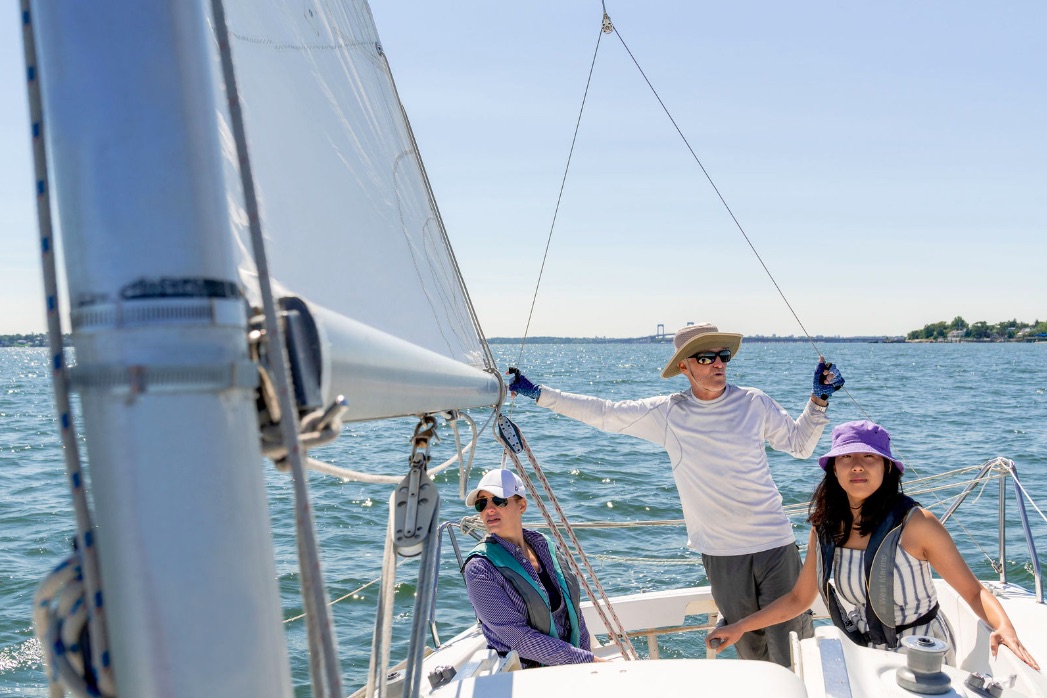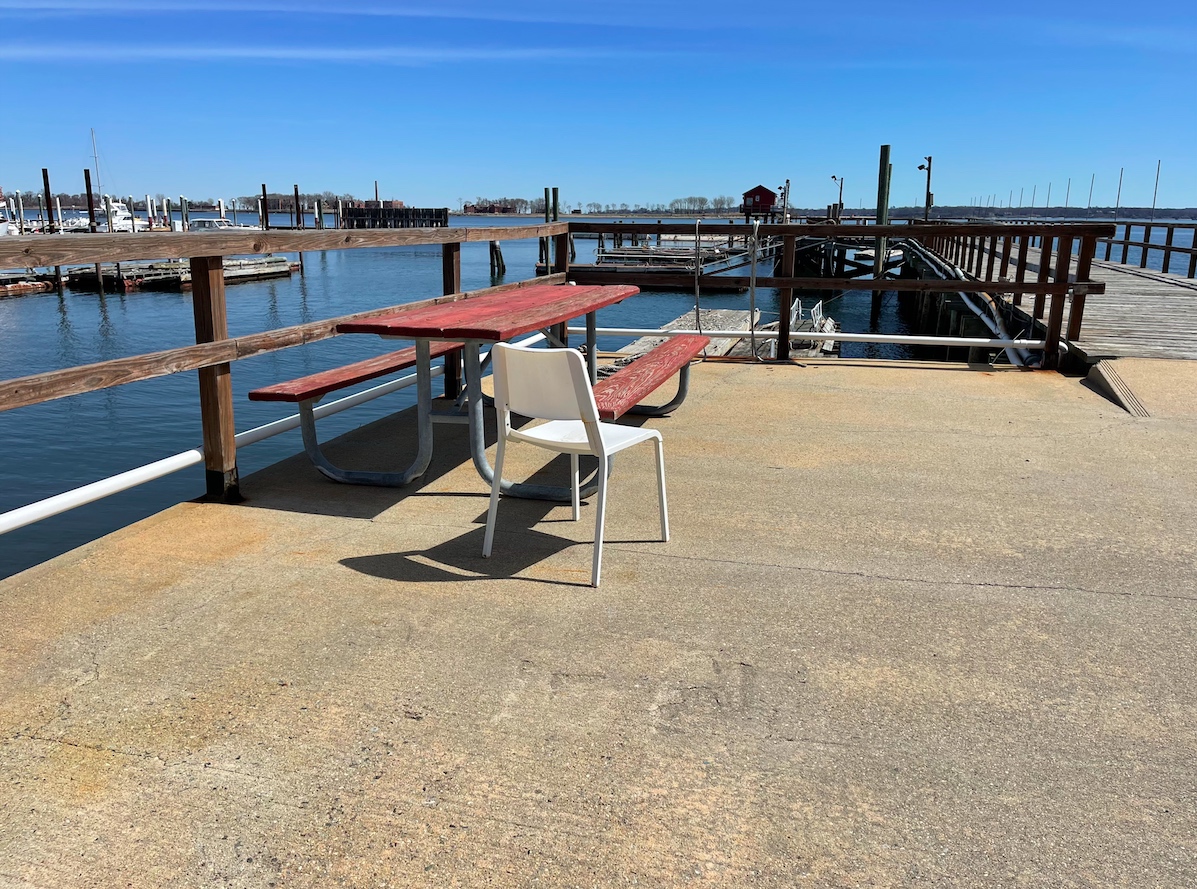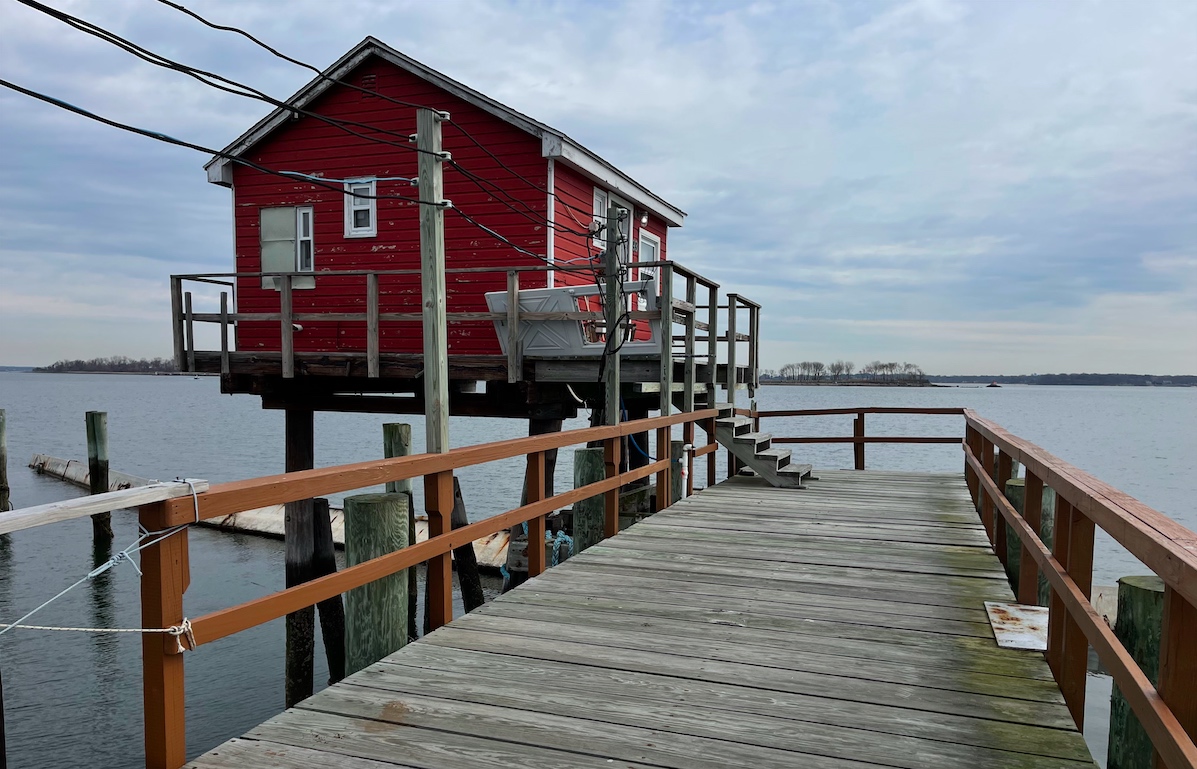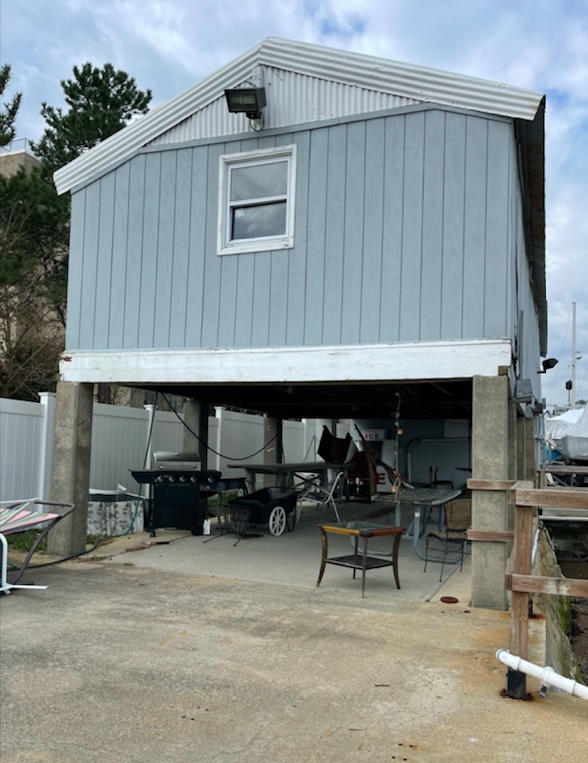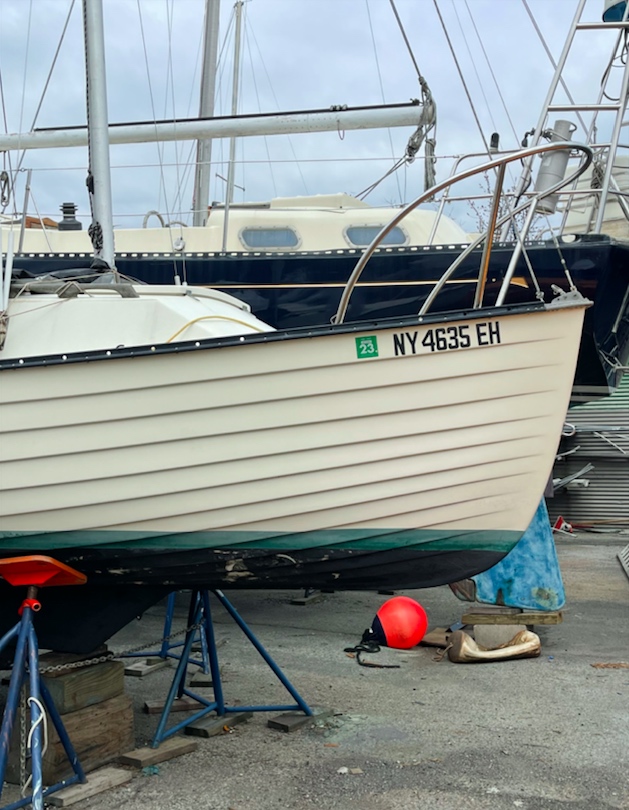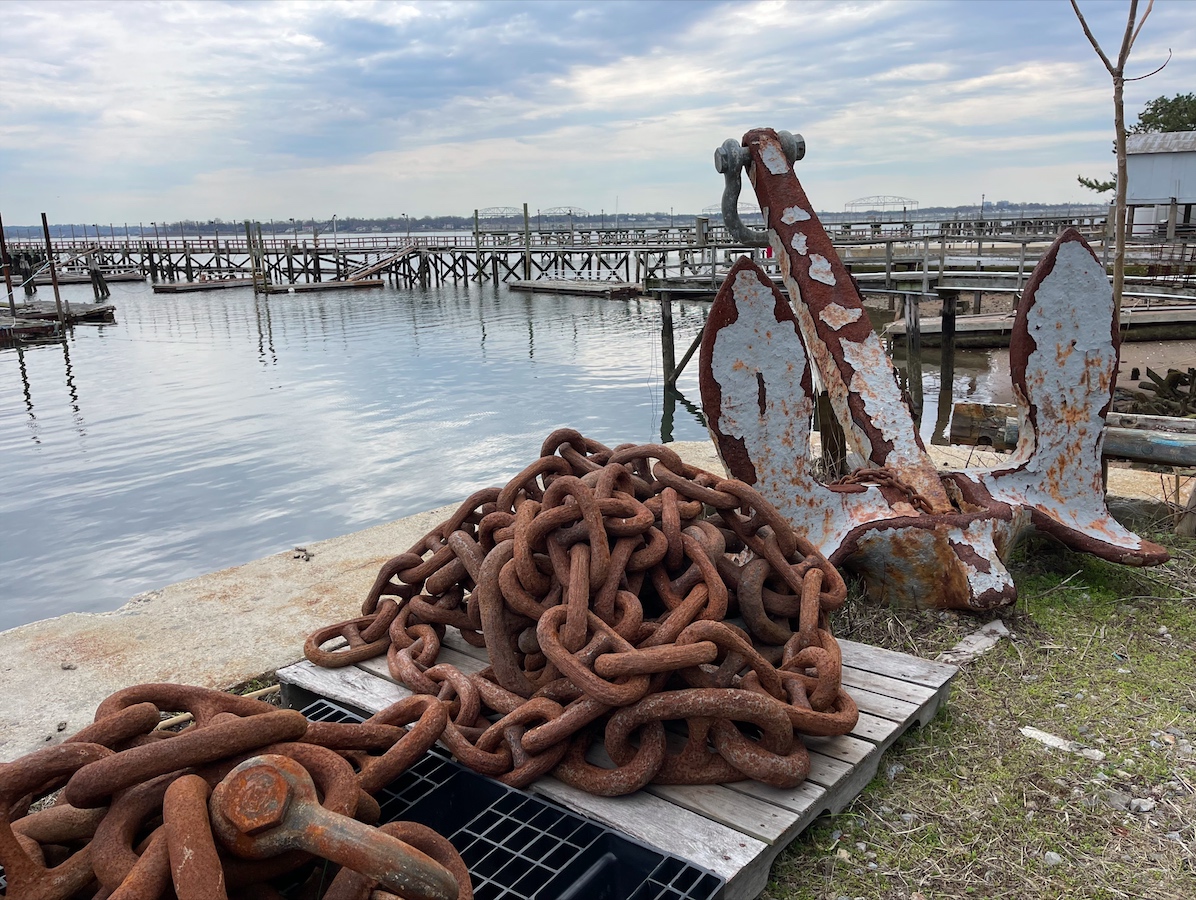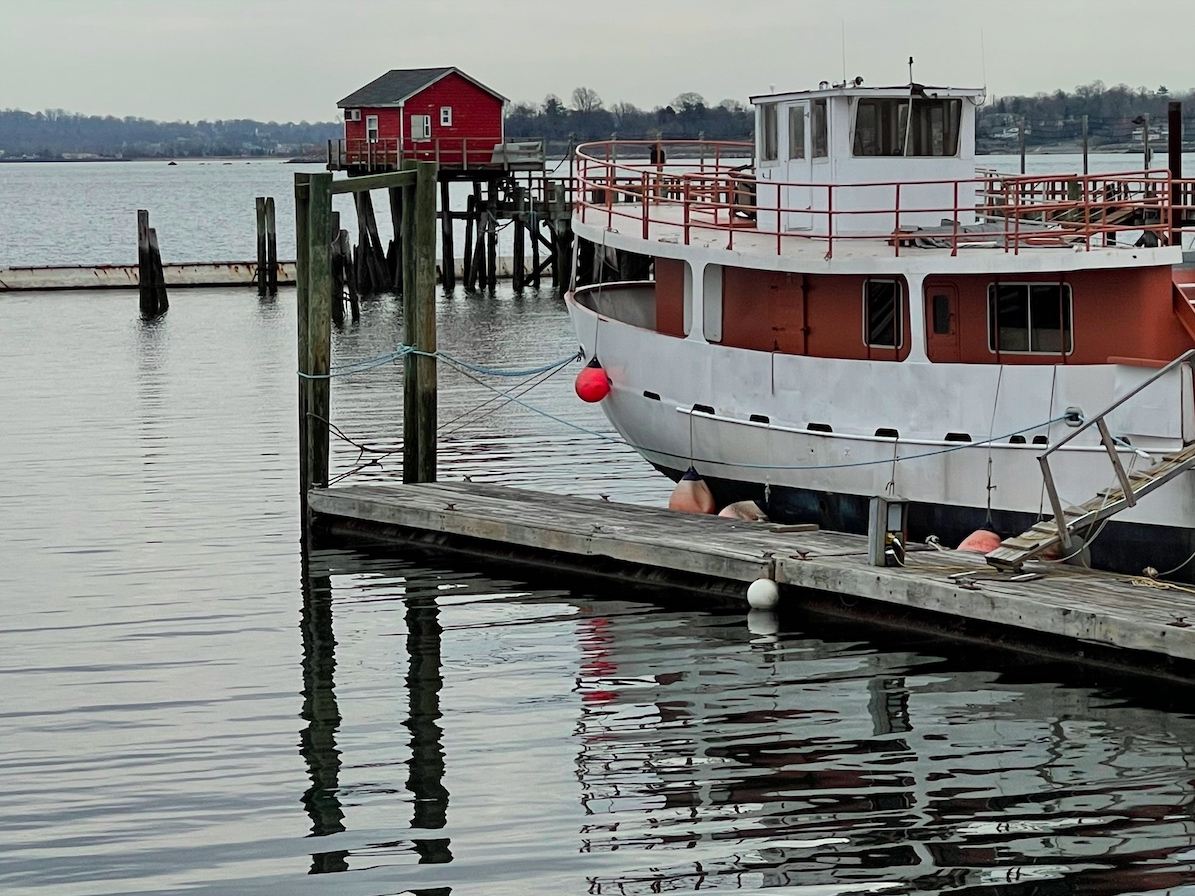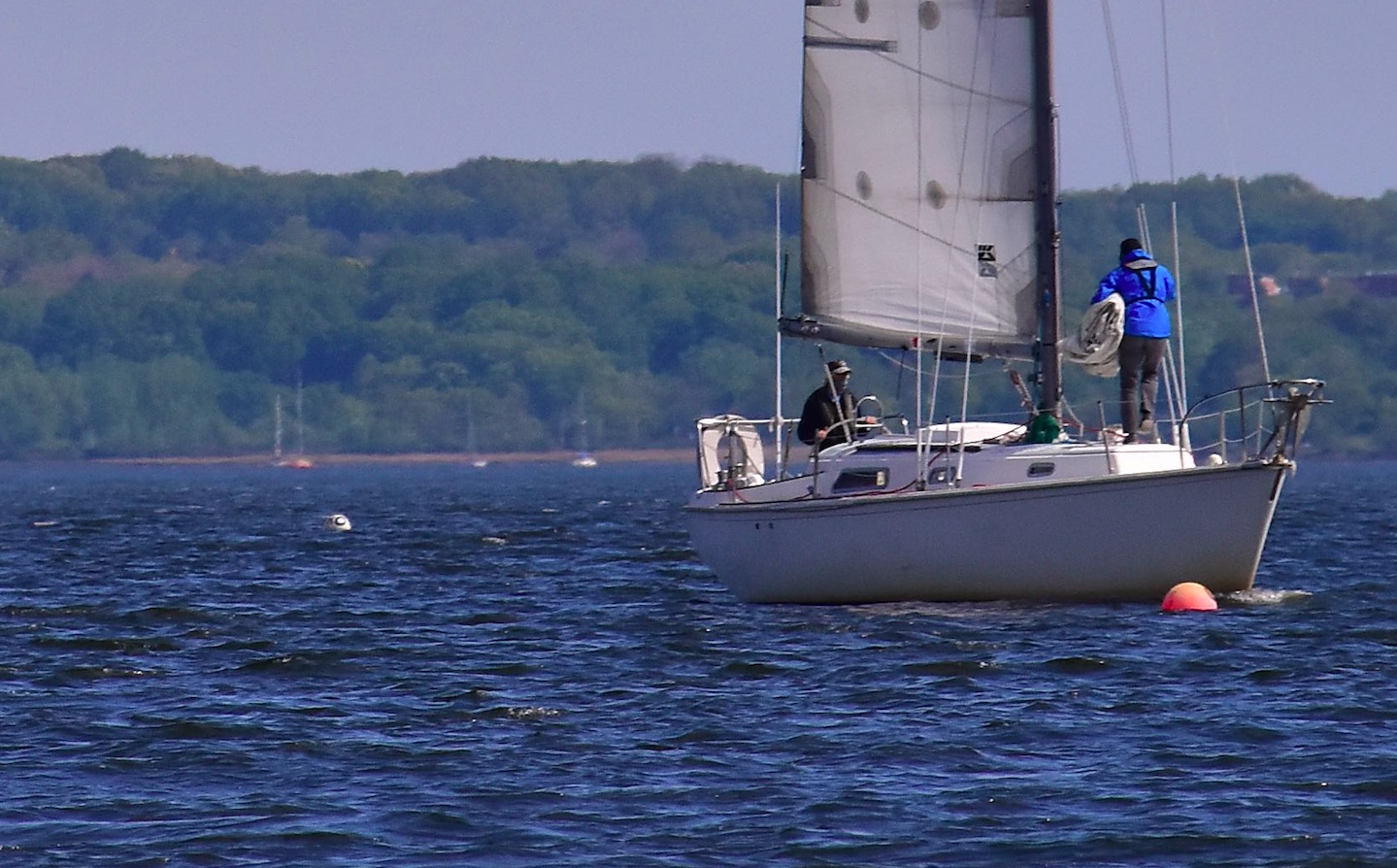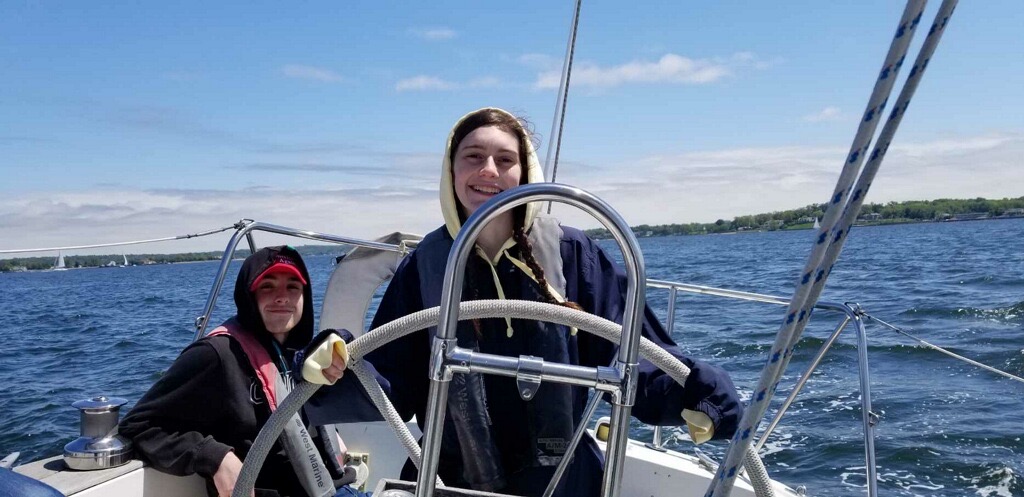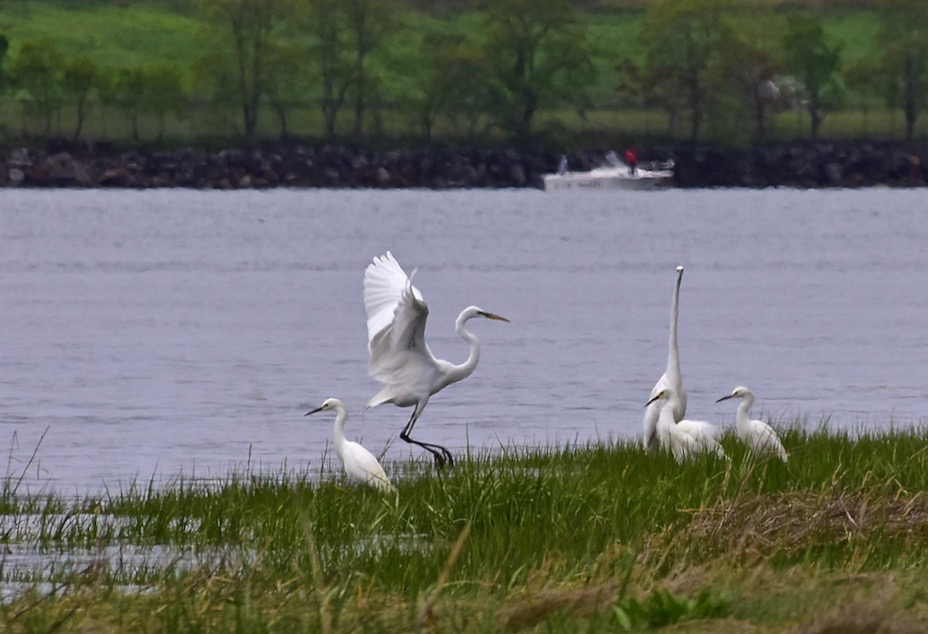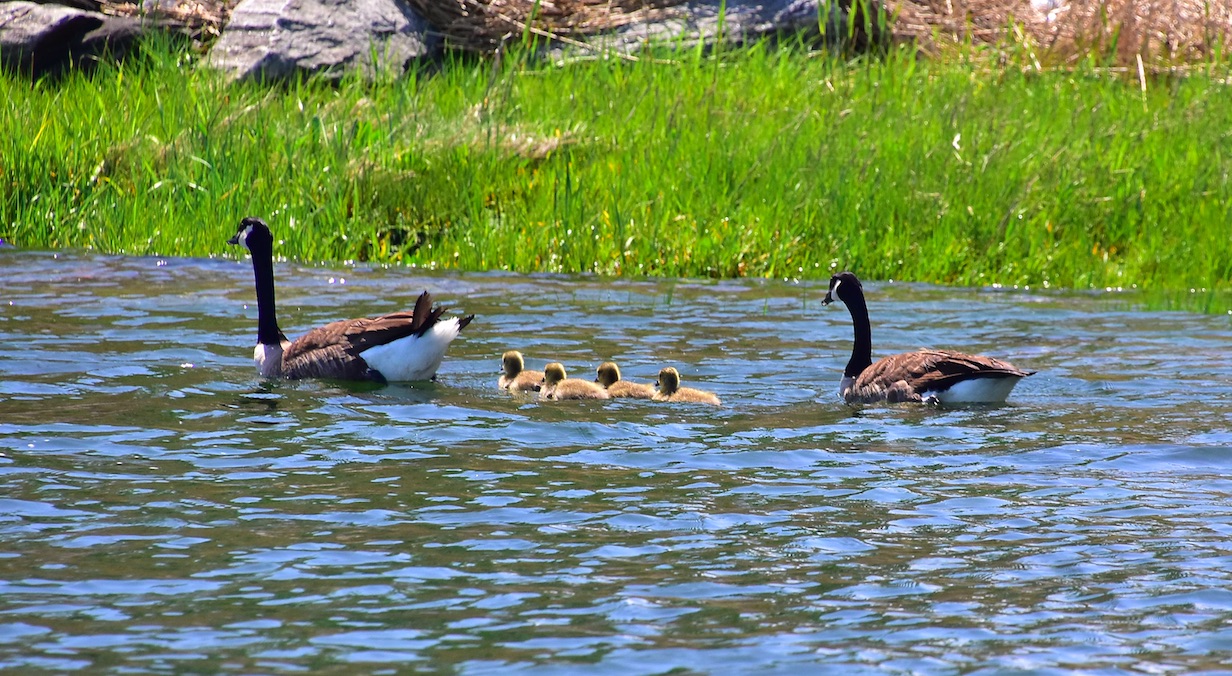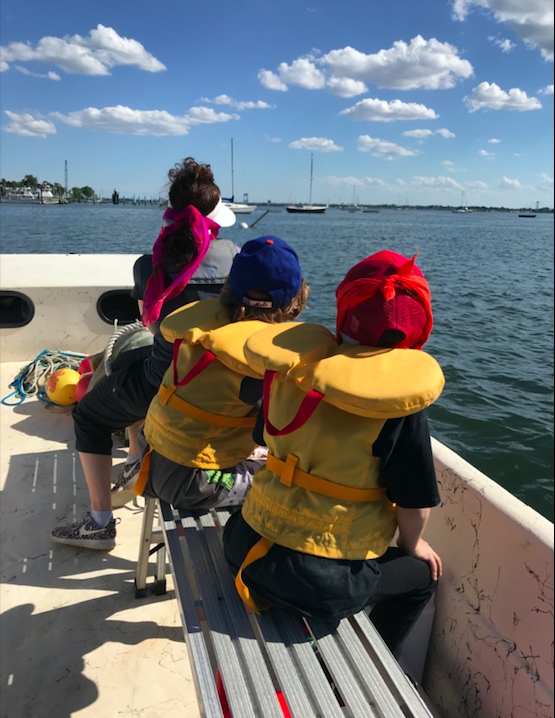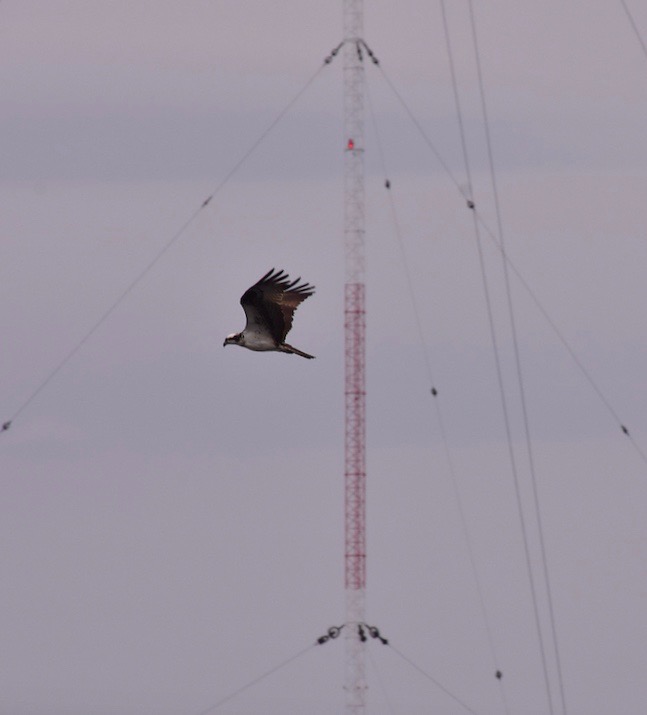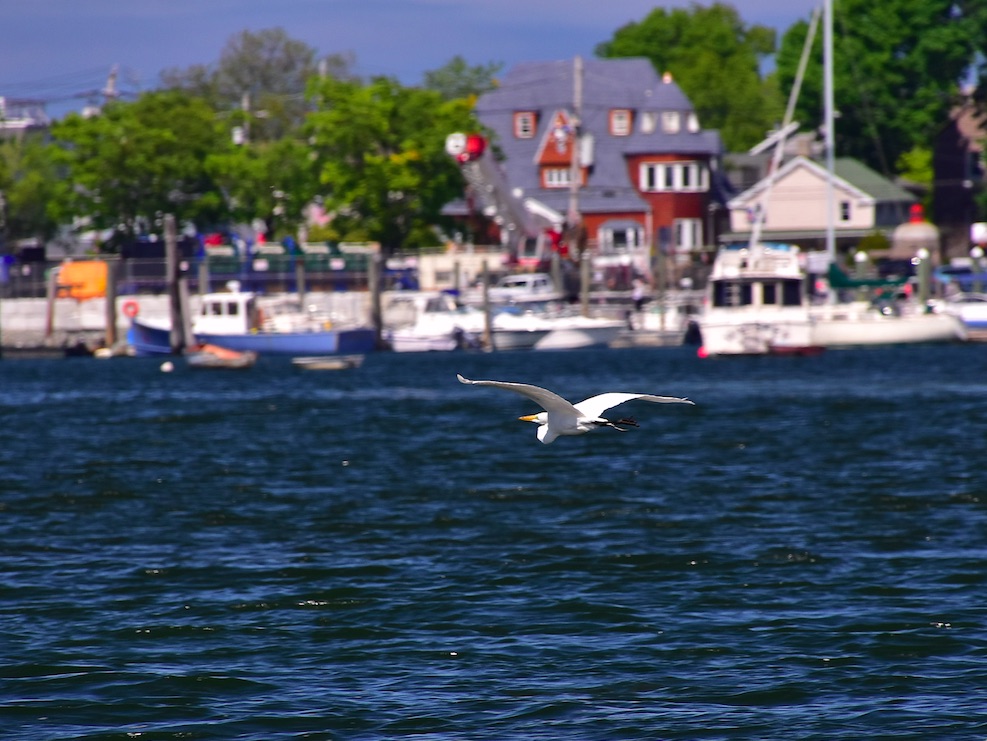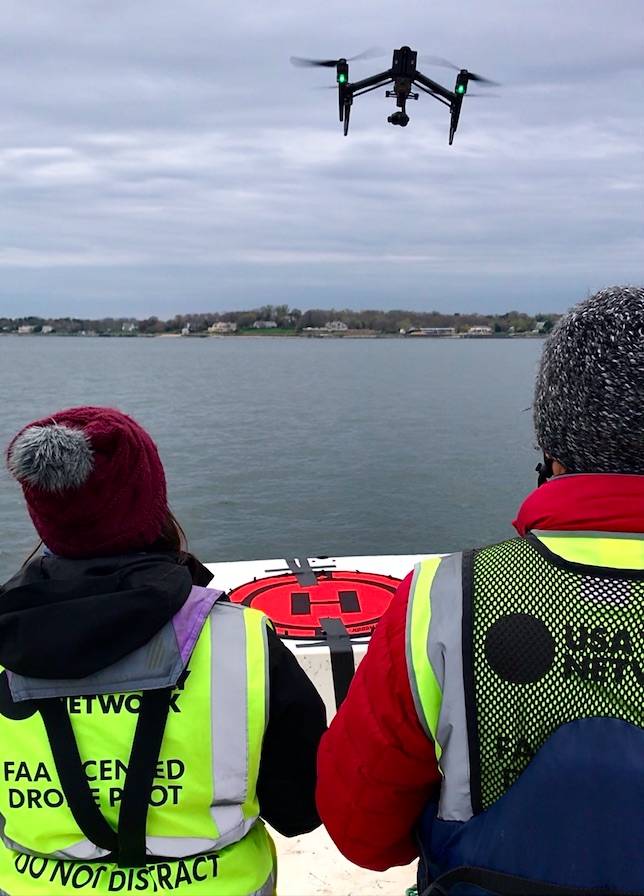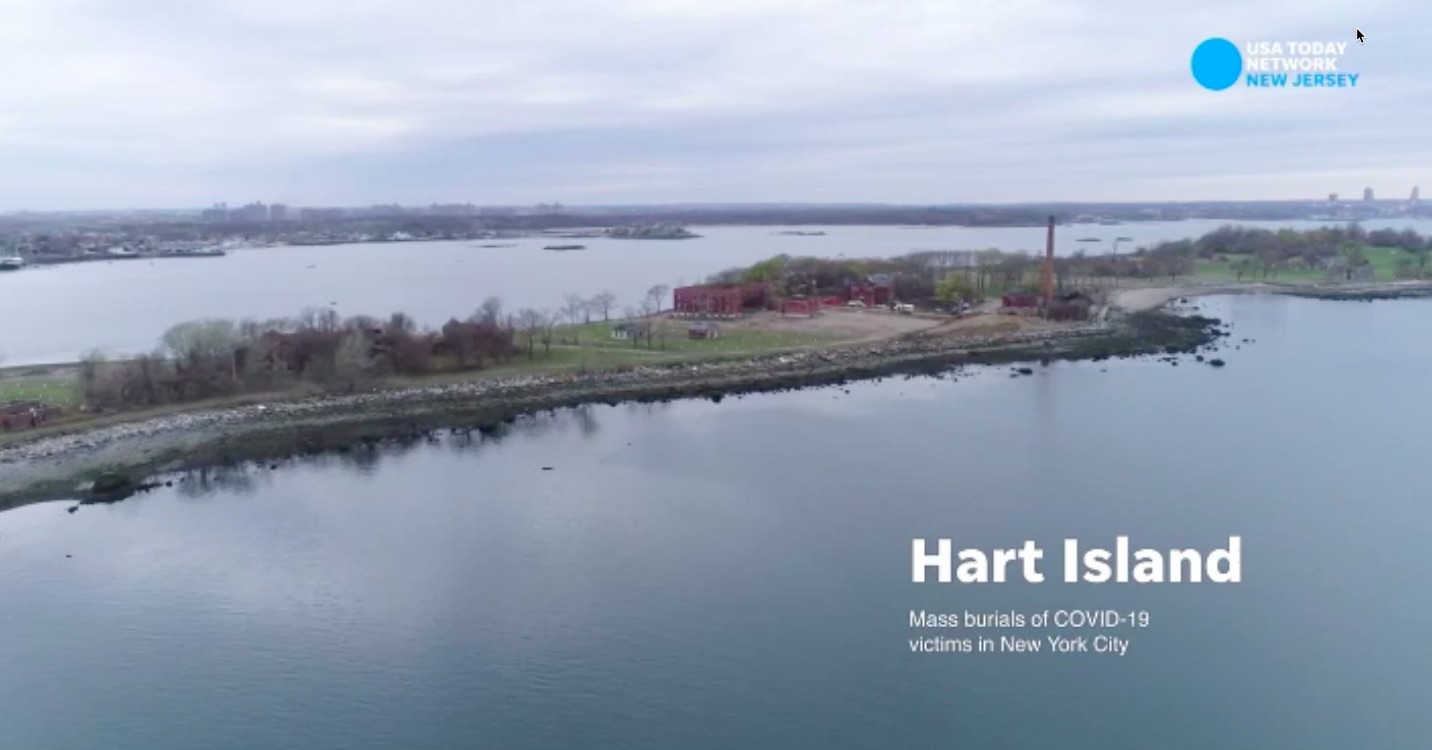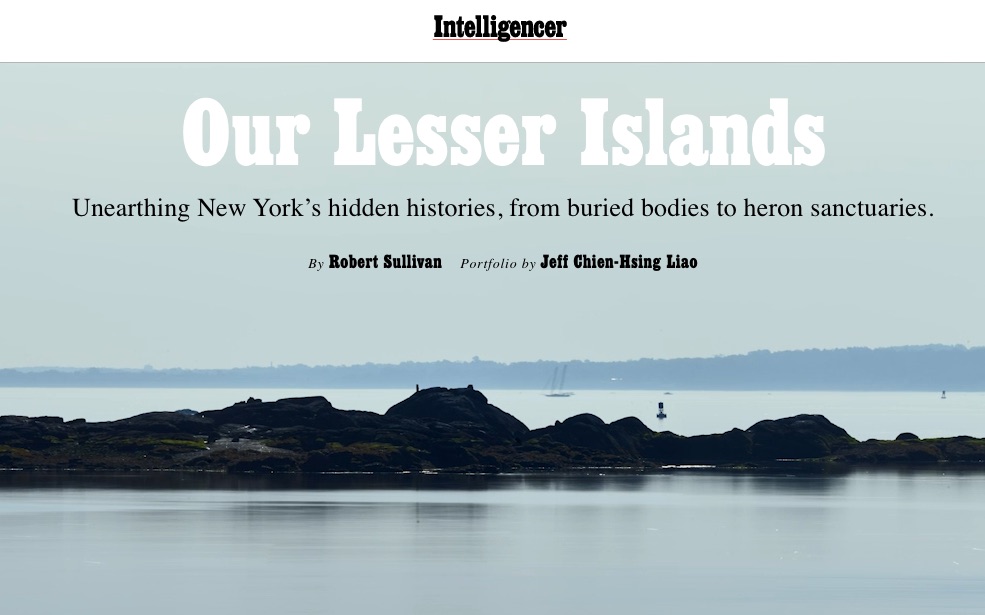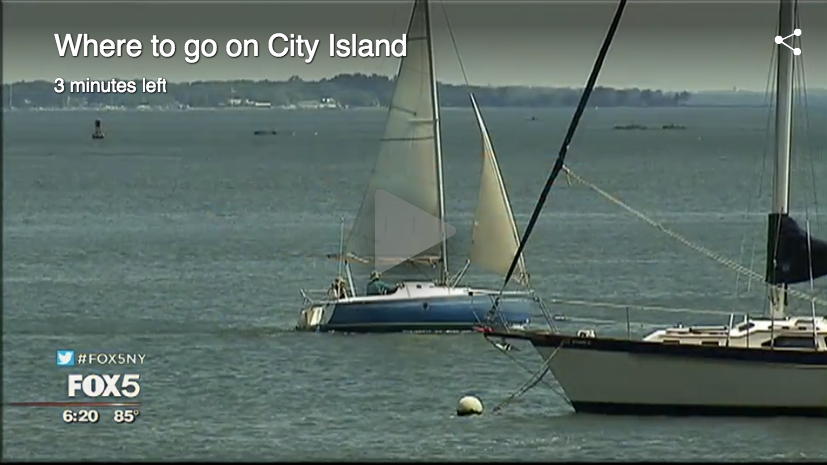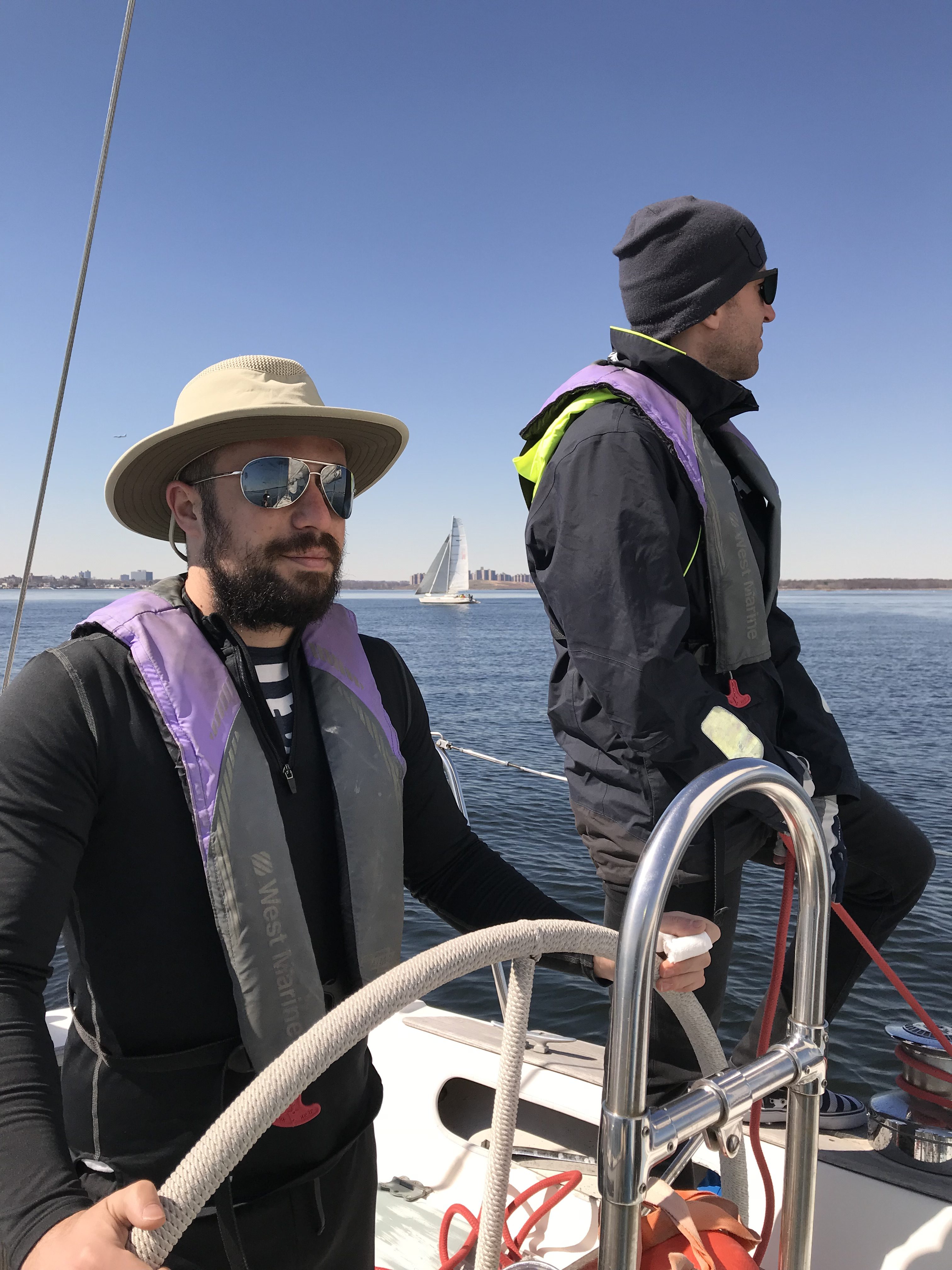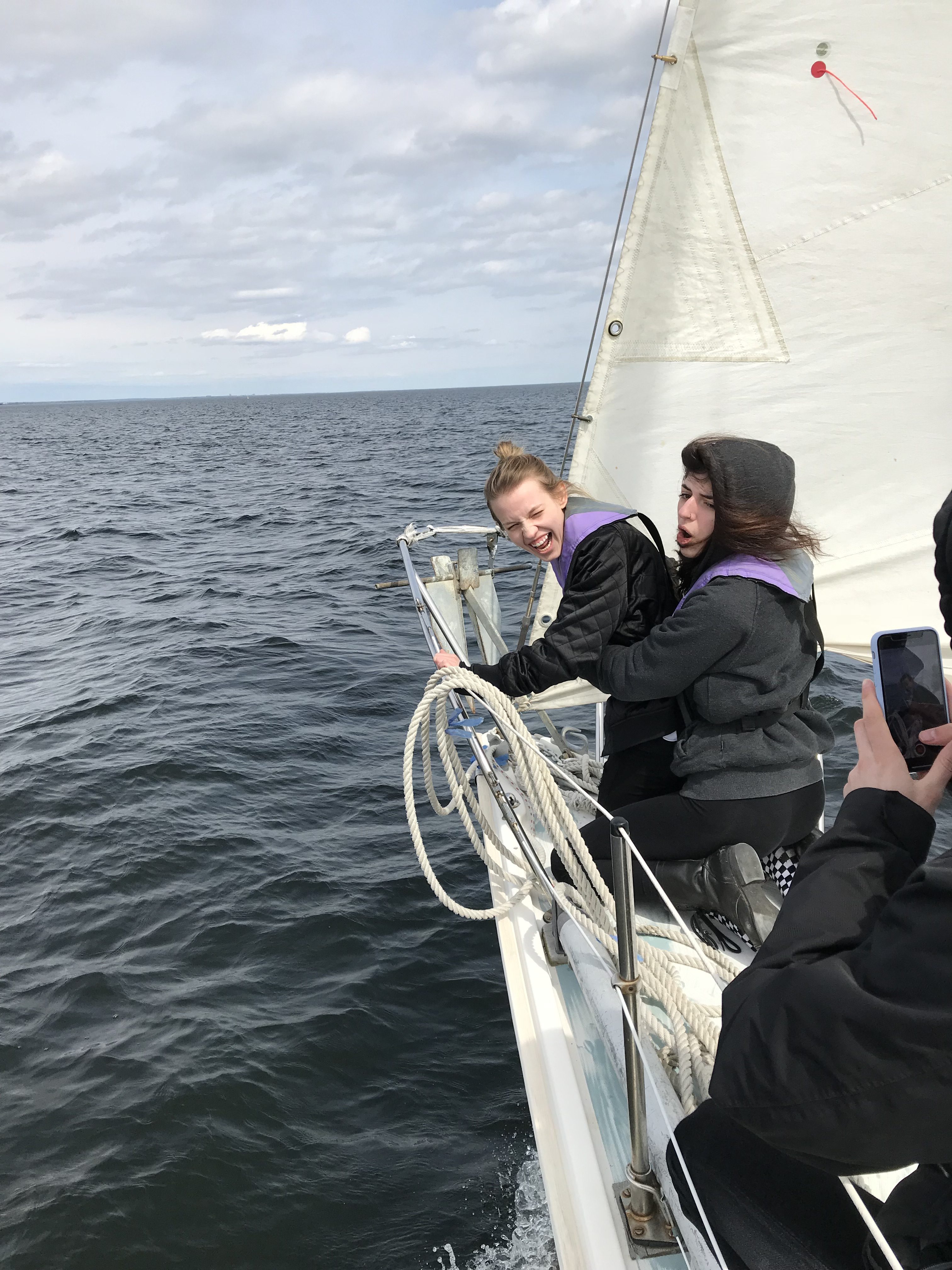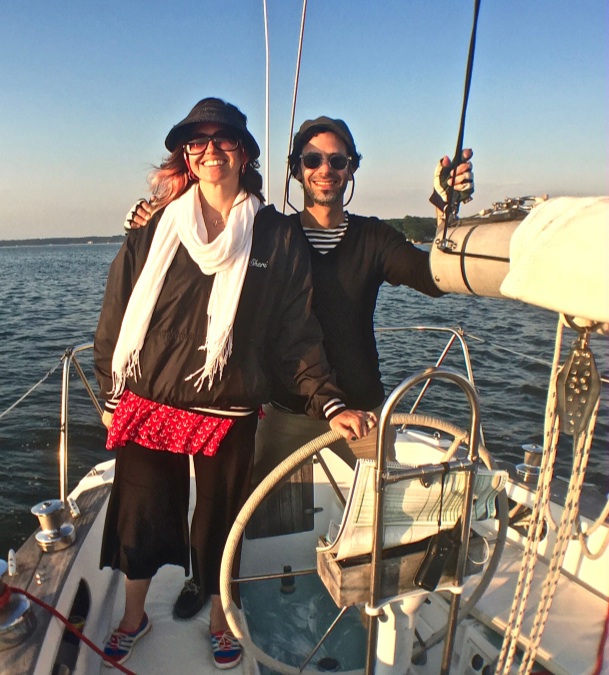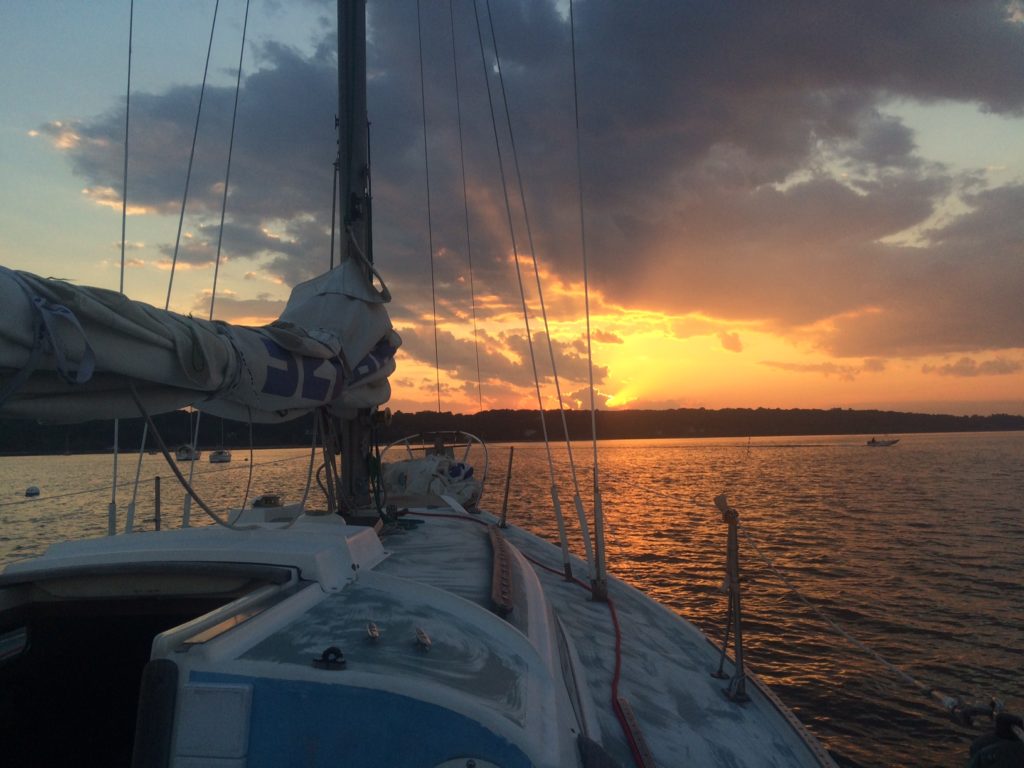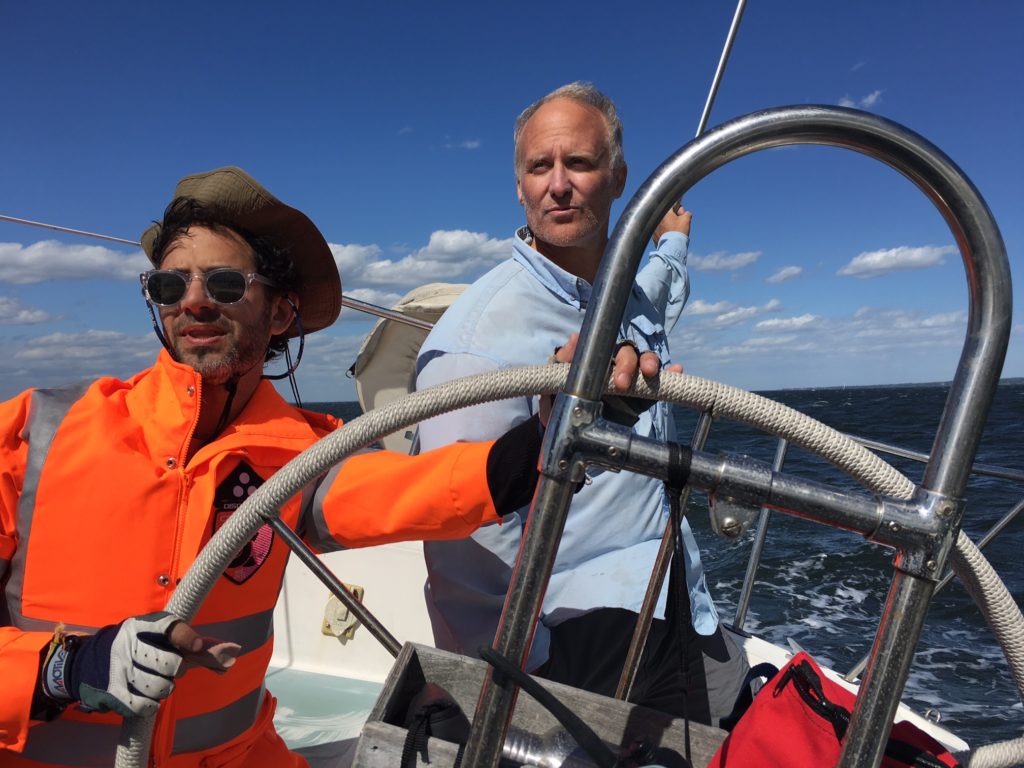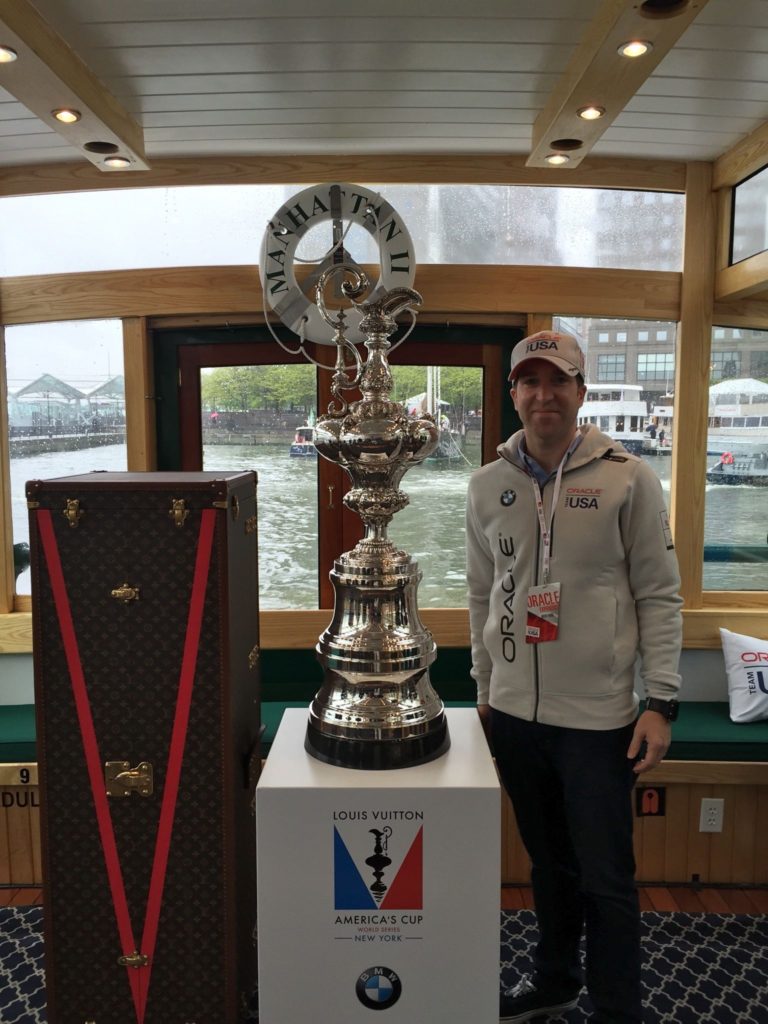The internet giant sent some people to learn how to sail and do a photo shoot of it.
Over the years, we’ve attracted a lot of publicity from the media. Not sure how or why, but they show up. TV, Cable, magazines, papers… we’ve gotten quite an assortment. Sometimes it’s a feature and we’re the talent. Sometimes, we’re more behind the scenes facilitating them getting their shots.

The one that “got away?” We barely missed a shot providing a boat and logistics for a shoot with the famed portrait fotog Annie Liebowitz. That hurt. But at least they came to us. Others?..
- Discovery Home Channel
- CW 11 (WPIX)
- Transit Transit News
- NY 1 News
- Fox 5 News
- Worth Magazine
- Fine Living Network
- Metro Channel
- NBC
- New York Magazine
…and so on, and so on… And, by the way, some of the better ones are on our YouTube Channel. All posts and pages have our social media links.
Anywho, it was pleasant if not a real surprise that we got an email from GoDaddy looking to do something. They proposed to send a staff (pro) photographer along with two producers to feature New York Sailing Center, and do so by getting out on the water if at all possible. It’s rarely NOT possible, especially if the group is flexible.
The weather that day was windy and gusty. But, it was still within a reasonable range, and the folks were all athletic and outdoorsy. So, I started off with shoreside shots of me giving an actual lesson using our model sloop (boat), just as we would for any first session when people are learning how to sail.
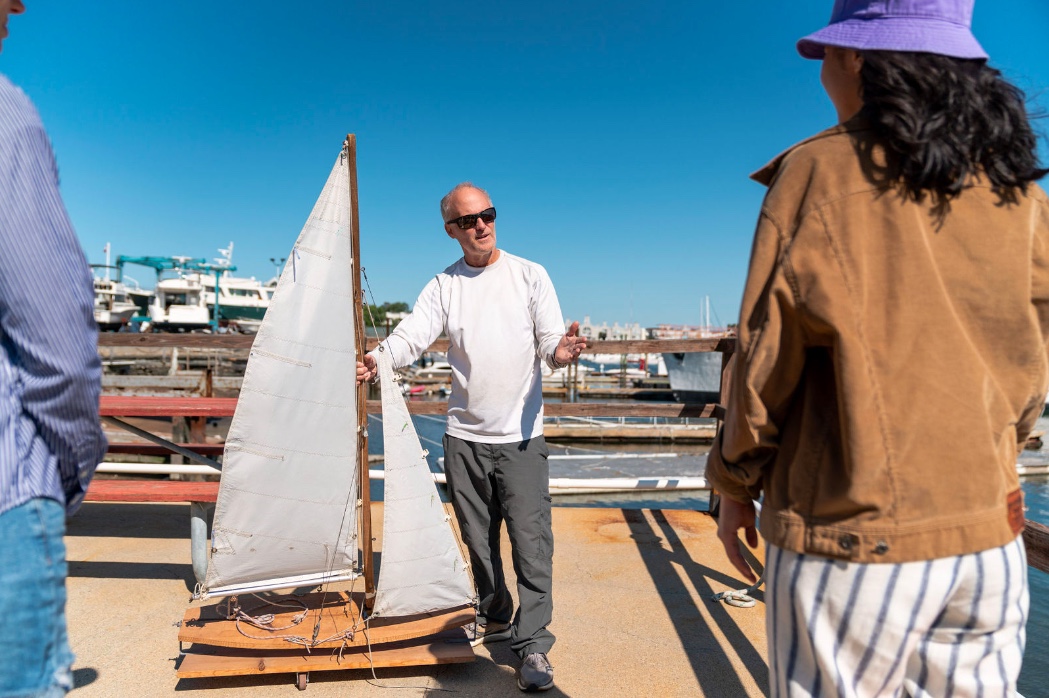
The goal? Get the shots. The secondary goal? Teach them enough about sailing in a few hours that they felt like they understood how it worked and could do it at a very basic level. That meant this:
- Understanding how sails harness wind to create power to make the boat go;
- Understanding where one can aim a sailboat in relation to the wind;
- How to steer the boat;
- How to start and stop;
- How to keep the boat moving at any angle it can sail on by adjusting the sails;
- Believing the boat won’t flip over when the wind picks up!
It was a success. The team got the goods, and got the boat going. They asked questions that demonstrated they were thinking about it, and basically understanding it. For a Day 1 on the water, that’s enough. Of course, the goal is to come back and do more. In our full 3-day course (one of thew few that actually exist in the region if not much of the nation), students have time. They can get comfortable and competent as they reinforce the basics and add more skills and technique.
What about a “3-hour tour?” Well, that depends: on the weather, the inherent aptitude of the students/s, and how it all comes together with an instructor. Even the boat plays a part. There are several excellent boats to use for teaching sailing, and a number of good ones. They’re all as different as they are similar, and the difference – and devil – is in the details.
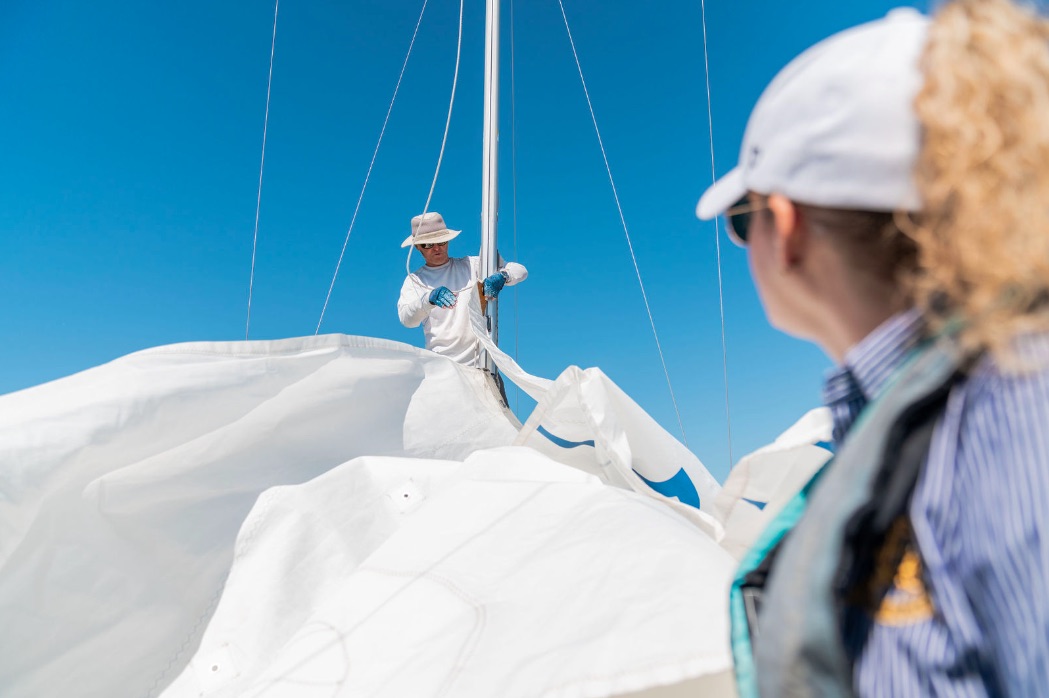
Averaged out over a few days, things tend to just average out. But, over a few short hours, the weather might favor one design of boat more than another. That can make progression slower on the “wrong” boat (meaning not optimal for the current conditions, even if perfectly safe and useable for the purpose).
The challenge for an instructor is dealing with the hand they’re dealt on that day. Light & variable winds, or strong & gusty, can complicate teaching for a first sailing session. It’s not just the boat, but the students themselves, that can make it a teaching challenge. A good instructor adapts to both the students and the sailboat.
On this day, we had a boat that could certainly go out in more wind than we had. But, for a first lesson, we were already a little above the ‘ideal’ threshold for that boat. (By the way, there’s a great little boat called an Ideal 18, which we really wouldn’t want to be out in on that day – but great for more experienced sailors in club racing.) We were aboard one of our Beneteau First 21.0 sloops which are light, responsive, and reactive. All great for getting a true feel for sailing, and also developing innate physical sailing skills.

But, on this day, we’d have preferred to be aboard one of the Ensign sloops we use down in Sheepshead Bay. Why? Heavier, less reactive, and more predictable. On a windy, gusty day, it’s quicker and easier for beginning students to understand how sailing works if they’re getting surprised less by the boat.
But, both great teaching boats; both could do the job that day.
The little Beneteau did its job. I did mine. The GoDaddy team got to do theirs. And, they want to come back and do more sailing!
Done.
